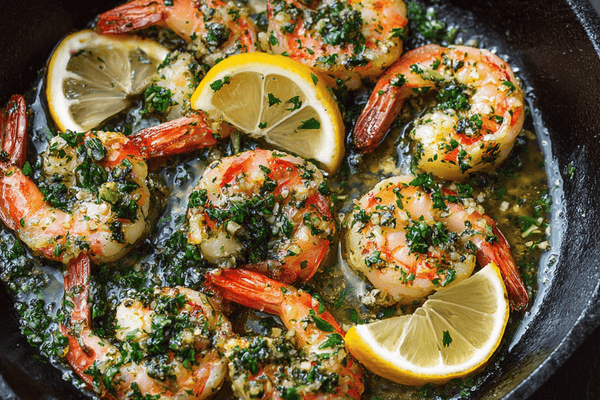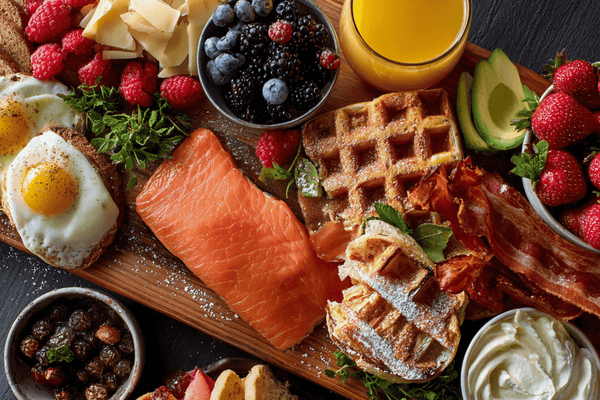
Japanese knives with their ultra-sharp (and sometimes easily chipped edges) require a different storage method than your everyday kitchen utensils. Not only can these knives easily cause injury if left in unsecured storage, but the knife itself could be potentially damaged.
One popular storage method that many households and even professional kitchens use to store their knives when not in use is a chef knife holder such as a knife block, but can you also use a knife block to hold Japanese chef knive sets with their fine and easily damaged edges?
Yes, a knife block can be used to hold Japanese chef knives and it is one of the best options for keeping your knives safely and conveniently stored away. When choosing a suitable knife block, it’s important to choose one that has edge-friendly features and a magnetic knife block could actually be the best option.
Knife blocks are a convenient method of storage for your Japanese chef knives. They are incredibly popular amongst home cooks and professional chefs alike - and for good reason. In this article, we will look at the pros and cons of knife blocks, and whether they are fit-for-purpose when it comes to holding your Japanese Chef Knives.
Table of content
Can You Use a Knife Block to Hold Japanese Chef Knives?

When it comes to knife storage, an easy solution is to place your knives in a secure and convenient knife block for large knives.
These are typically left on the counter making the knives easy to reach at all times and while it may seem like a very convenient solution, there are in fact some key considerations that you need to keep in mind that are specific to Japanese knives.
Safety
Firstly, it is always necessary with knives to consider the safety aspect. When it comes to storing your sharp utensils, you want to have the peace of mind that they are securely housed and out of harm's way.
Rest assured, knife blocks are typically designed to stay firmly in position with a sturdy base and slots that enclose the blade.
Organize Your Workspace
By nature, knife blocks are incredibly organized because they allow you to have all your knives safely housed in one place.They are, arguably, a safer option than other storage types as it keeps the sharp edge away from your fingers to avoid an accident when retrieving them. They are handy when you require them and allow you to quickly identify your knife of choice too.
Storage
Japanese chef knives deserve to be cared for and respected, and proper storage is one of the most easily overlooked procedures for ensuring their longevity. Protecting the cutting edge of the blade is especially important when it comes to maintaining their quality.
Each knife in the block is secured within an edge keeper slot designed to protect the blade and keep the fine edge in pristine condition.
When it comes to inserting or removing your blades from the block, it is critical that the spine of the knife (the blunt side) is pressed against the wood so that the sharp edge does not get dragged against the side and subsequently risk being chipped and dulled.
Knife blocks are known to be rather unforgiving when used incorrectly. Frequently sliding your Japanese chef knives in and out can be rough on the blade and quickly blunt the delicate cutting edge.
We generally recommend that you avoid knife blocks that store your blades vertically (with the handles pointing upwards).

By comparison, the slots for a diagonal knife block (where the handles are angled towards you) are much easier to access, and this lowers the risk of you clipping the cutting edge.
If you are using a diagonal knife block, we also advise storing the blades with the spine side down in order to further prevent the cutting edge from coming into frequent contact with the block.
Diagonal knife blocks are also better suited for storage underneath shelves or cabinets as vertical knife blocks require more clearance in order to release the blade.
When it comes to the material of the block, we always recommend using wood as it is more forgiving on the delicate cutting edge.
The only point to consider with wood is that it also needs to be maintained to prevent rot, mold, and damp which is a key consideration that we’ll cover shortly.
Limitations When Using a Knife Block
While there are many useful, practical qualities to a knife block, it is worth noting that they are by no means perfect and do possess some limitations.
First of all, if you have a small kitchen, a block may be using up valuable countertop space.
Another snag is that the block itself can be difficult to clean. The narrow slots can accumulate dust, debris, and even mold, and when it comes to sanitizing them, your options are very limited!
It is important, therefore, that you take the time to properly dry your Japanese chef knives by hand before returning them to the block.
If you allow them to catch and retain moisture, you may find that they quickly become a breeding ground for nasty bacteria and mold whilst also being prone to rust.
To clean your block, wipe the unit down by hand with a damp cloth and some food-safe disinfectant. Giving your block a shake-out every few weeks is always good practice too.
Most blocks are made from wood so avoid putting them in a dishwasher as the heat and water are likely to crack the wood and ruin the finish of the block.
Many people acquire a knife block as part of a package with a set of knives. If you are planning to take your knife investments more seriously, you may find this to be a waste of time and resources: a specific number of knife slots for a specific set of knife sizes can quickly become a cause for frustration.
While they are ideal if you have a perfectly matched knife set, you are limited in that you only have enough slots to keep the knives that came with it. If you wish to start adding to your collection of Japanese chef knives, you are quickly going to find that you need more storage space.
Rather, it may be a better option to accumulate your own collection of knives piece by piece.
Purchasing them as a set means that you often end up overpaying for some Japanese knives that may not justify the expense, such as a standard Nakiri, or undercutting on quality for those that would warrant a greater expense like a Santoku.
Building your own knife collection from the ground up is not only incredibly rewarding, it is also likely to save you money by not purchasing additional knives you are likely not to make use of.
Alternatives to a Knife Block
While we’ve covered what many would feel to be a “traditional” knife block which is a wooden block with carved slots to insert your knives.
There is also an alternative style of knife block that could be more suitable for holding your Japanese chef knives.
The Magnetic Knife Block
There is a huge range of knife blocks available with many practical and stylish offerings out there in a variety of shapes and sizes.
If you are purchasing individual Japanese knives, you may prefer to invest in a magnetic knife rack or block. They are functional, practical, and provide an attractive alternative to the conventional knife block, or a Japanese knife block sets like this one.
Chef knife holders / magnetic knife racks are ideal for holding all types of Japanese knives as they are lightweight, and with a sleek profile, magnetic blocks can be mounted on any space in your kitchen giving you quick and easy access to your tools.
They also make excellent storage solutions for small kitchens where every inch of countertop space is at a premium!
They are also incredibly easy to clean with no nooks or crannies for dust or debris to accumulate in, and a quick wipe down will disinfect them completely.

Magnetic knife blocks complement your workflow better because you can immediately see which cutting utensil you need.
They are neat and hassle-free, the flat surfaces are much easier to clean and, since there are no hard-to-reach slots for debris to fall into, they are considerably more hygienic.
They can be quickly and easily cleaned with a damp cloth, and they take up no more space than a conventional knife block.
A magnetic knife block sits on a countertop in much the same way yet the blades sit flat on the surface of the wood rather than in a slot.
The knives are securely held using strong magnets embedded in the wooden frame, and they are easy to remove for use: simply twist onto the spine of the knife and pull away from the block.
For placement, perform the reverse by placing the spine of the knife down first before twisting the blade onto the block.
FAQ
Q: Are knife blocks suitable for all types of Japanese chef knives?
A: While knife blocks can accommodate most Japanese chef knives, it's important to check the width and size of the knife slots. Some Japanese knives have thinner and more delicate blades, so ensure that the slots are wide enough to prevent unnecessary contact and potential damage.
Q: How should I store Japanese chef knives in a knife block?
A: To properly store Japanese chef knives in a knife block, ensure that the blades are inserted into the slots with care. Avoid forcefully pushing the knives into the block, as this can damage the delicate edges. Gently slide the blade into the slot and make sure it is secure.
Q: Are there any alternatives to a knife block for storing Japanese chef knives?
A: Yes, there are alternative storage options for Japanese chef knives, such as magnetic knife holders, knife rolls, or knife trays. These alternatives provide different storage configurations and can be suitable depending on personal preference and kitchen space.
Q: How should I maintain and clean a knife block?
A: To maintain and clean a knife block, periodically remove all the knives and thoroughly clean the block using warm soapy water. Rinse it well and allow it to air dry completely before reinserting the knives. Regular cleaning helps prevent the buildup of dirt, dust, and bacteria.
Q: Can a knife block affect the sharpness of Japanese chef knives?
A: A well-designed knife block should not affect the sharpness of Japanese chef knives. However, if the slots are too narrow or made of abrasive materials, it could potentially dull the blades over time. It's essential to choose a knife block that won't compromise the sharpness of your knives.
Q: How often should I inspect and replace a knife block?
A: It's a good practice to inspect your knife block regularly for any signs of wear, cracks, or damage. If you notice any issues, it's best to replace the block to ensure the continued safety and protection of your Japanese chef knives. Additionally, consider replacing the block if it becomes excessively stained or difficult to clean.
Final Thoughts
Well then… Can you use a knife block to hold Japanese chef knives? The short answer: yes. Knife blocks offer a simple yet effective method of storage for your Japanese knives.They are a practical and reliable method of storage for your Japanese chef knives and it is for these reasons many chefs choose to invest in a knife block for storing their most prized cutlery.
Investment in a quality knife block will last for years to come. Most importantly, though, remember to consider the knife block that best complements your workflow and is also best suited to your specific knife types and sizes.
Some of our knives even come as Japanese knife block sets to help you find just the right size and strength.



